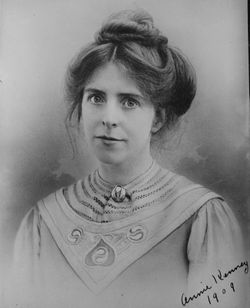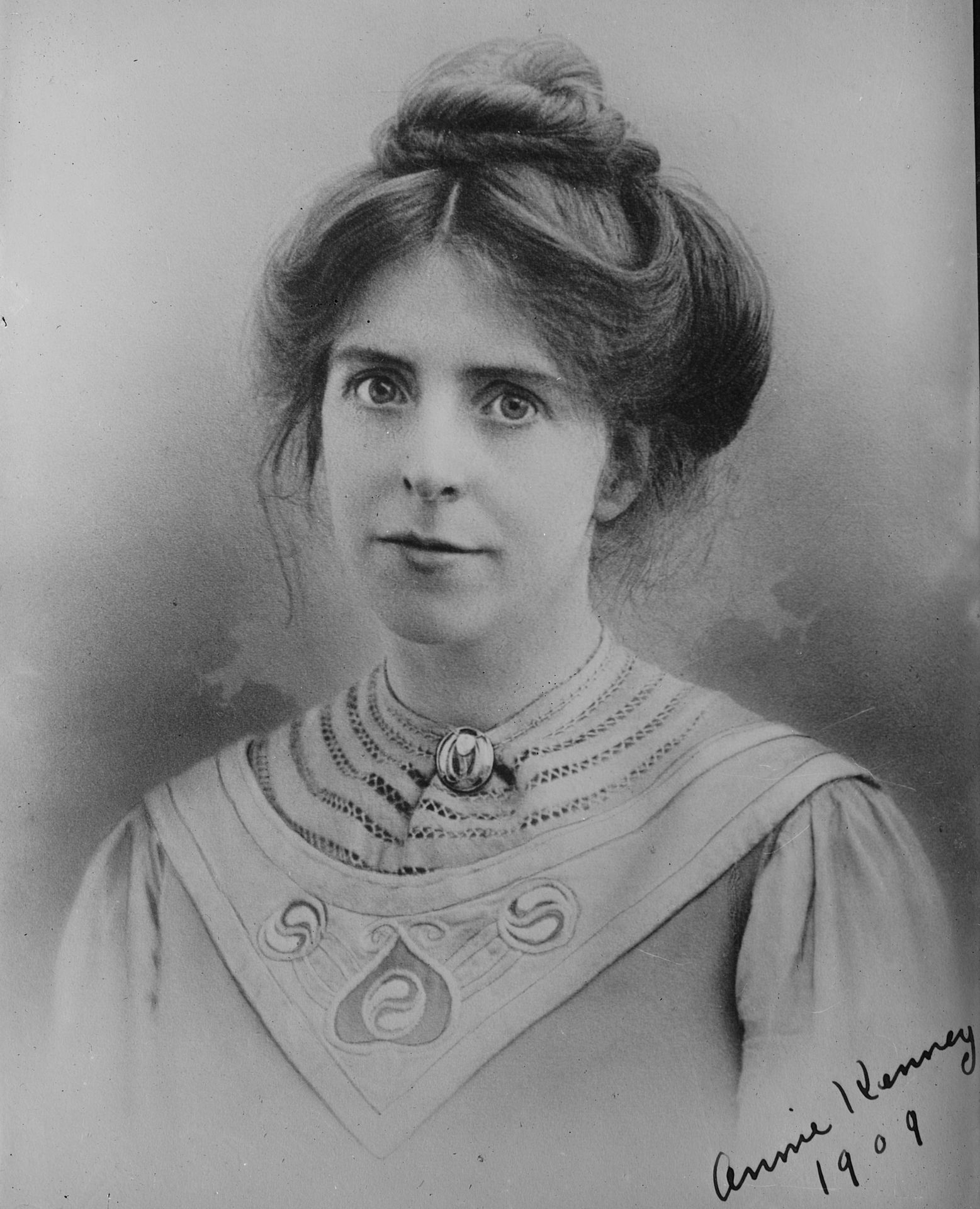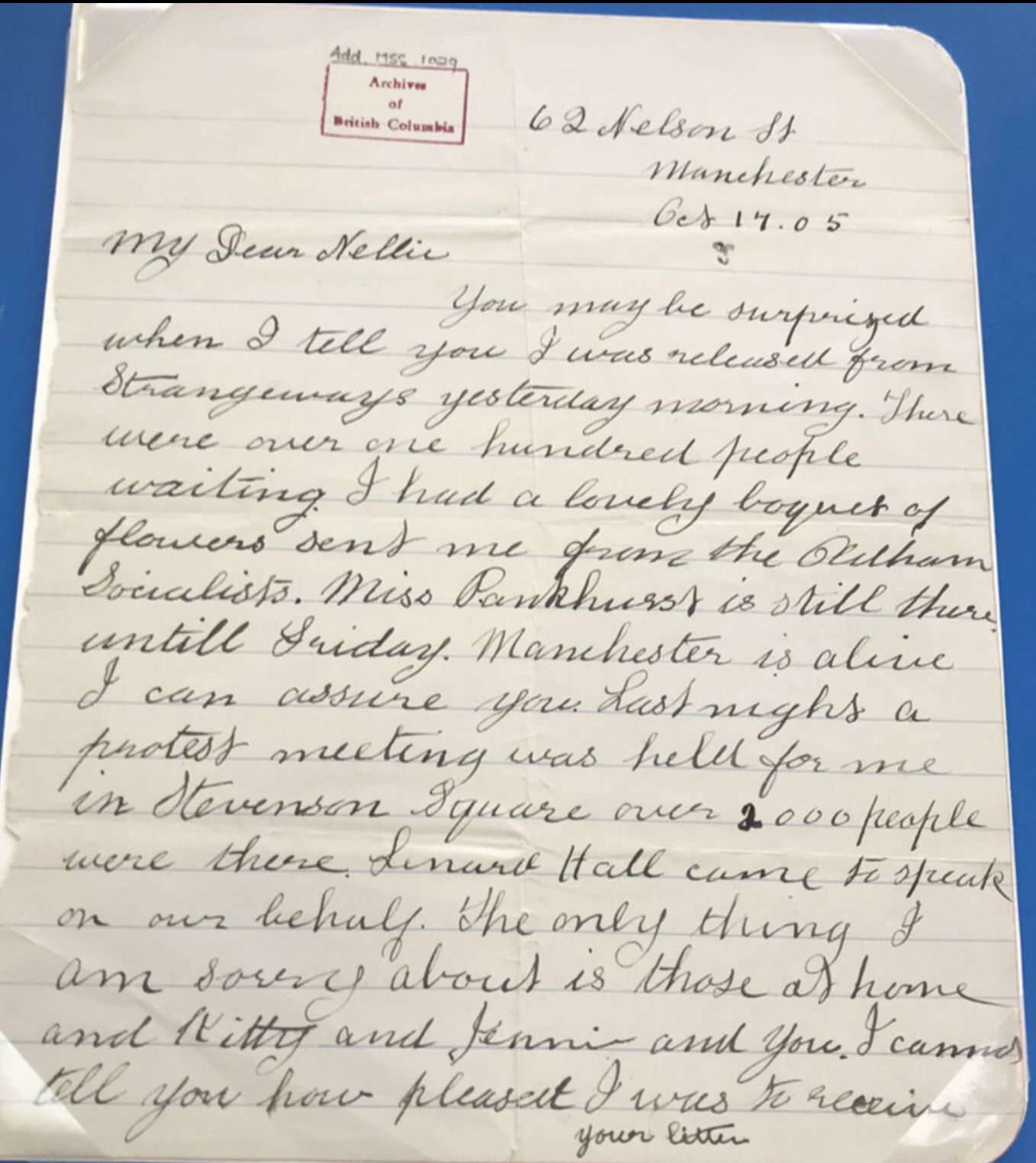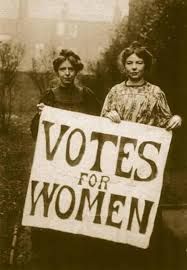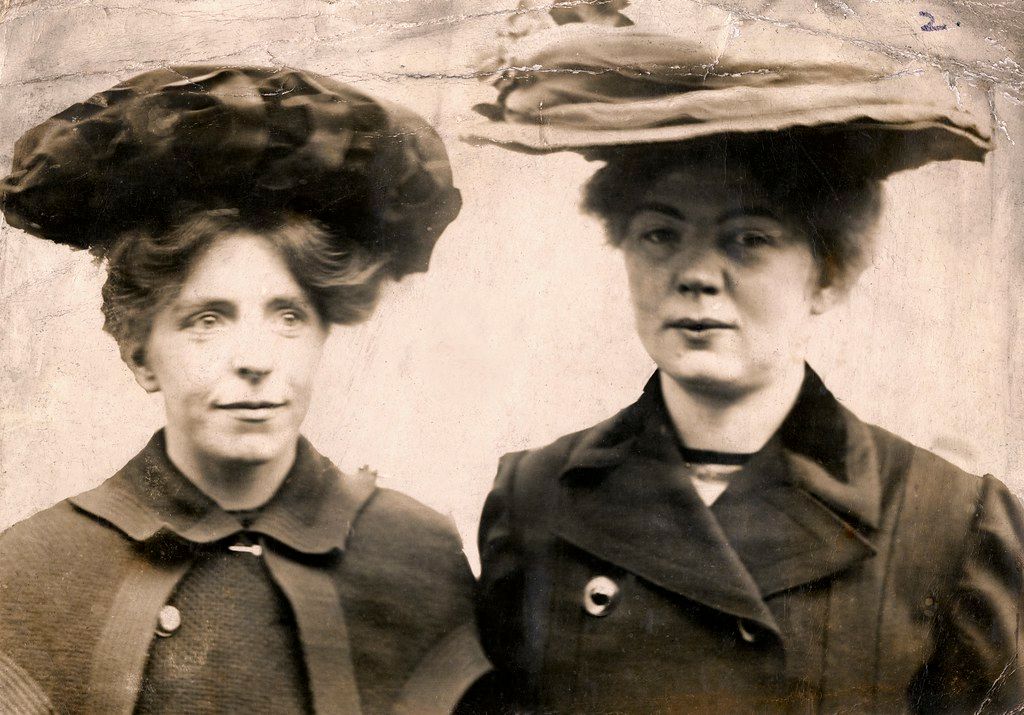At the age of 10, while attending school, Annie also worked part time in a cotton mill. By the age of 13, she was working full time in the Leesbrook Mill in Oldham. Her shifts were 12 hours from 6 am to 6 pm. Once, while working as a weaver's assistant, one of her fingers was torn off by a spinning bobbin. Annie worked in the mill for 15 years.
Annie became actively involved in the Women's Social and Political Union (WSPU) after the premature death of her mother Ann, at the age of fifty-three in January 1905, when she and her sister Jessie heard Teresa Billington-Greig and Christabel Pankhurst speak at the Oldham Clarion Vocal Club in 1905, on the subject of women’s suffrage.
In 1907 Annie Kenney was appointed WSPU organiser at a salary of £2 a week. She was based in Bristol, and it was during this time that she met Mary Blathwayt at a WSPU meeting in Bath. Mary’s parents Emily Blathwayt and her husband, Colonel Linley Blathwayt, owned a house called Eagle House and it was used, from 1909 to 1912, as a refuge for suffragettes who had been released from prison after hunger strikes. It became known as the Suffragette's Retreat. Over the next few years, Annie was to spend a lot of time at Eagle House near Batheaston "where, for the first time, she began to learn French, to play tennis, to swim, to ride and to drive."
When Christabel Pankhurst fled to France to avoid arrest in 1912, Annie was put in charge of the WSPU in London.
Annie’s militant suffragette action with Christabel Pankhurst earned her several terms of imprisonment, where she went on hunger strike and underwent force-feeding many times, always determined to confront the authorities. Once, just after she’d been released from prison in 1914 in a very weak state, she had to be carried into a meeting in Knightsbridge on a stretcher which was then laid between two chairs on the platform.
Annie Kenney was charged with "incitement to riot" in April 1913. She was found guilty at the Old Bailey and was sentenced to eighteen months in Maidstone Prison. She decided that Grace Roe should now became head of operations in London. She immediately went on hunger strike and became the first suffragette to be released under the provisions of the Cat and Mouse Act. Kenney went into hiding until she was caught once again and returned to prison. That summer she escaped to France during a respite and went to live with Christabel Pankhurst in Deauville.
At the outbreak of World War I in 1914, Emmeline Pankhurst called an end to suffragette militancy and urged the women to become actively involved in the war effort, taking on jobs usually employed by men.
When limited suffrage was extended to women in 1918, Annie withdrew almost entirely from active politics; she was physically and mentally exhausted. While recuperating in Scotland in August 1918, she met James Taylor, whom she married in April 1920. For most of the period 1918-1920 she was occupied with writing her own account of her life as a suffragette, published as “Memories of a Militant” in 1924.
In February 1921 Annie gave birth to her only child, a son, Warwick Kenney-Taylor. In 1923 the Taylor family moved from London to Letchworth.
In October1932 Annie developed what she described as "my serious illness" [diabetes] and thereafter did not enjoy good health. In 1953 she suffered a stroke and died on July 9th. Her funeral was conducted according to the rites of the Rosicrucian Order and her ashes were scattered by her family on Saddleworth Moor.
Annie Kenney was the only working class woman to hold a senior position in the Women's Social and Political Union.
At the age of 10, while attending school, Annie also worked part time in a cotton mill. By the age of 13, she was working full time in the Leesbrook Mill in Oldham. Her shifts were 12 hours from 6 am to 6 pm. Once, while working as a weaver's assistant, one of her fingers was torn off by a spinning bobbin. Annie worked in the mill for 15 years.
Annie became actively involved in the Women's Social and Political Union (WSPU) after the premature death of her mother Ann, at the age of fifty-three in January 1905, when she and her sister Jessie heard Teresa Billington-Greig and Christabel Pankhurst speak at the Oldham Clarion Vocal Club in 1905, on the subject of women’s suffrage.
In 1907 Annie Kenney was appointed WSPU organiser at a salary of £2 a week. She was based in Bristol, and it was during this time that she met Mary Blathwayt at a WSPU meeting in Bath. Mary’s parents Emily Blathwayt and her husband, Colonel Linley Blathwayt, owned a house called Eagle House and it was used, from 1909 to 1912, as a refuge for suffragettes who had been released from prison after hunger strikes. It became known as the Suffragette's Retreat. Over the next few years, Annie was to spend a lot of time at Eagle House near Batheaston "where, for the first time, she began to learn French, to play tennis, to swim, to ride and to drive."
When Christabel Pankhurst fled to France to avoid arrest in 1912, Annie was put in charge of the WSPU in London.
Annie’s militant suffragette action with Christabel Pankhurst earned her several terms of imprisonment, where she went on hunger strike and underwent force-feeding many times, always determined to confront the authorities. Once, just after she’d been released from prison in 1914 in a very weak state, she had to be carried into a meeting in Knightsbridge on a stretcher which was then laid between two chairs on the platform.
Annie Kenney was charged with "incitement to riot" in April 1913. She was found guilty at the Old Bailey and was sentenced to eighteen months in Maidstone Prison. She decided that Grace Roe should now became head of operations in London. She immediately went on hunger strike and became the first suffragette to be released under the provisions of the Cat and Mouse Act. Kenney went into hiding until she was caught once again and returned to prison. That summer she escaped to France during a respite and went to live with Christabel Pankhurst in Deauville.
At the outbreak of World War I in 1914, Emmeline Pankhurst called an end to suffragette militancy and urged the women to become actively involved in the war effort, taking on jobs usually employed by men.
When limited suffrage was extended to women in 1918, Annie withdrew almost entirely from active politics; she was physically and mentally exhausted. While recuperating in Scotland in August 1918, she met James Taylor, whom she married in April 1920. For most of the period 1918-1920 she was occupied with writing her own account of her life as a suffragette, published as “Memories of a Militant” in 1924.
In February 1921 Annie gave birth to her only child, a son, Warwick Kenney-Taylor. In 1923 the Taylor family moved from London to Letchworth.
In October1932 Annie developed what she described as "my serious illness" [diabetes] and thereafter did not enjoy good health. In 1953 she suffered a stroke and died on July 9th. Her funeral was conducted according to the rites of the Rosicrucian Order and her ashes were scattered by her family on Saddleworth Moor.
Annie Kenney was the only working class woman to hold a senior position in the Women's Social and Political Union.
Gravesite Details
Annie’s ashes were scattered by her family on the Saddleworth Moor.
Family Members
Sponsored by Ancestry
Advertisement
Records on Ancestry
Advertisement
